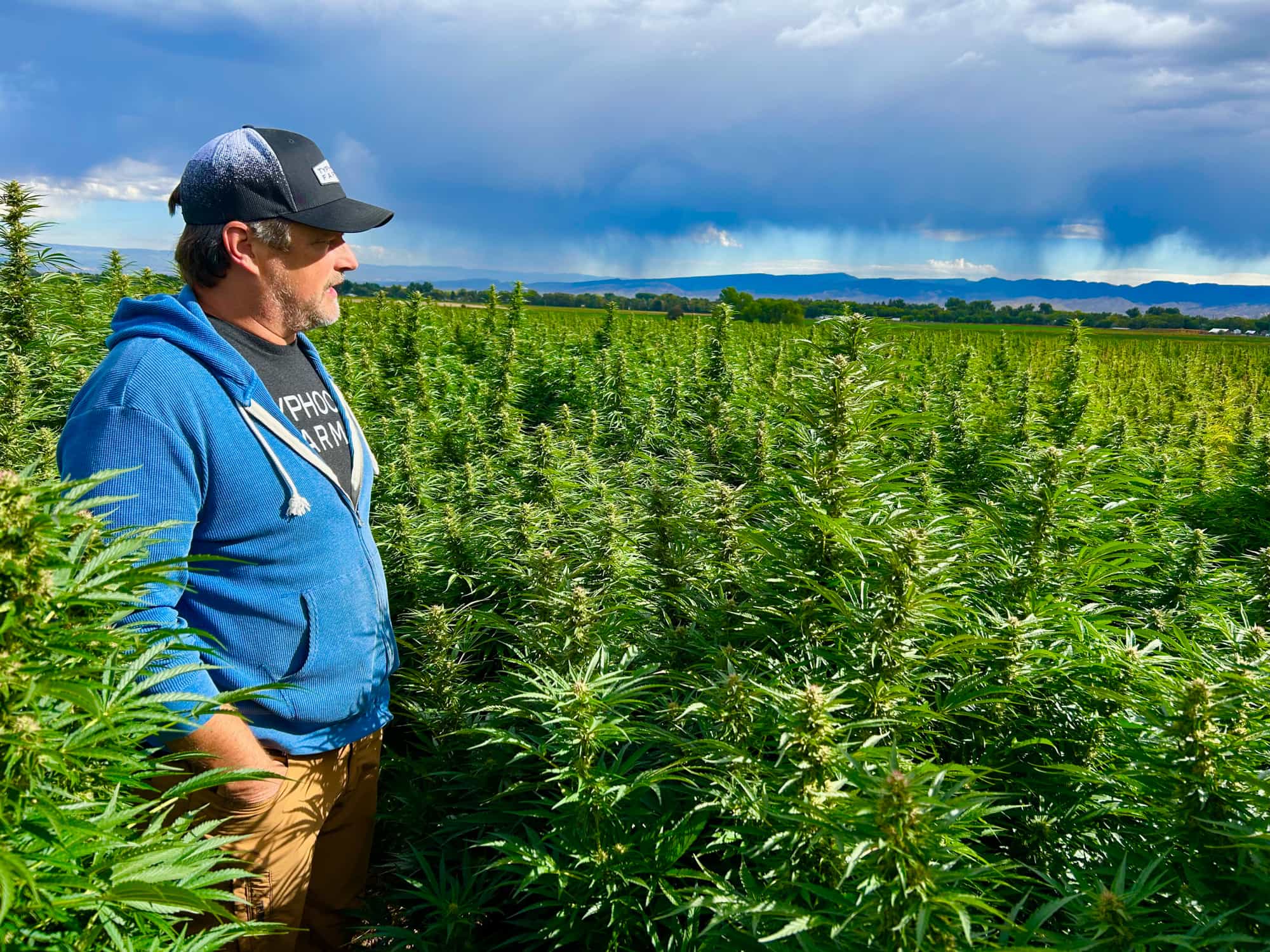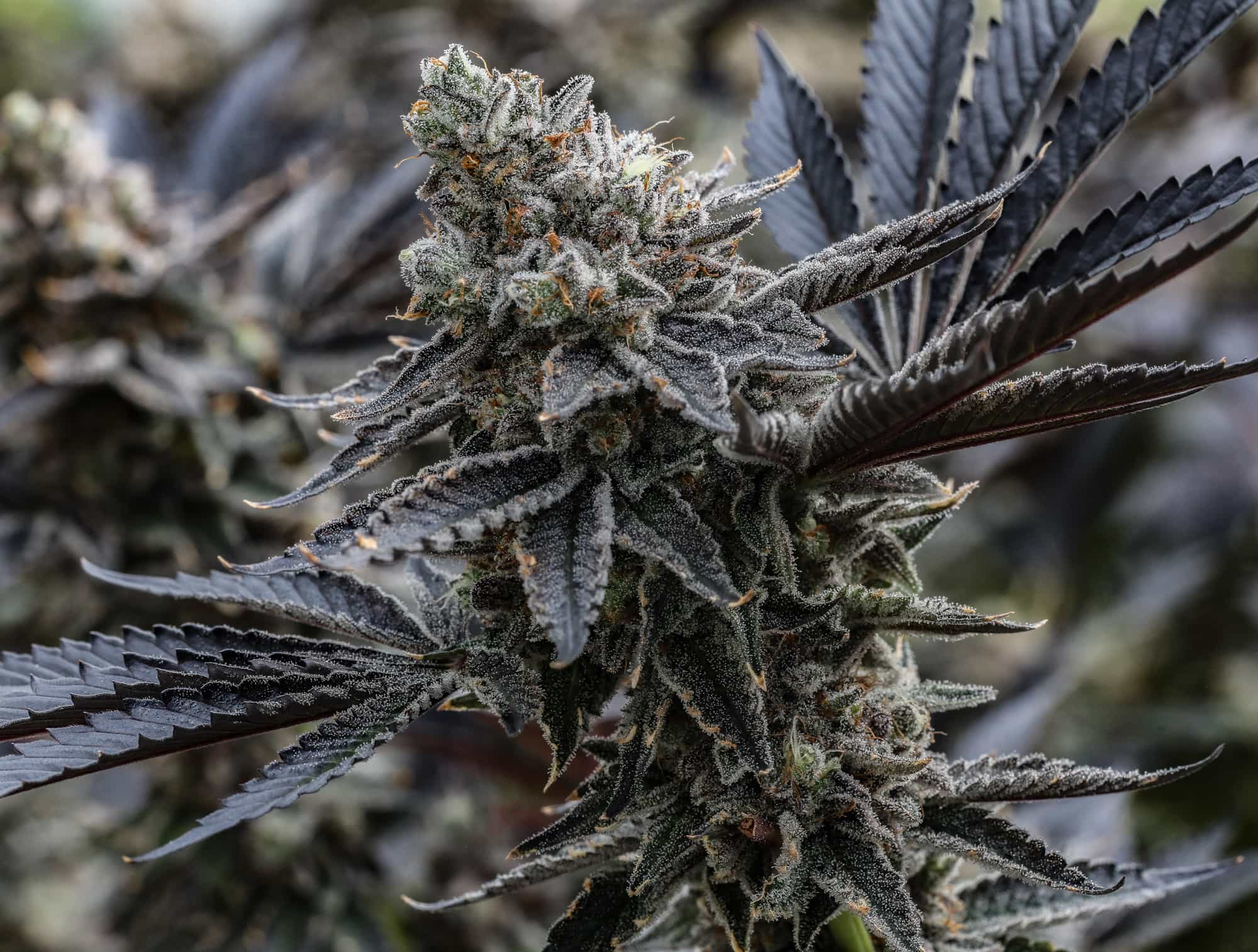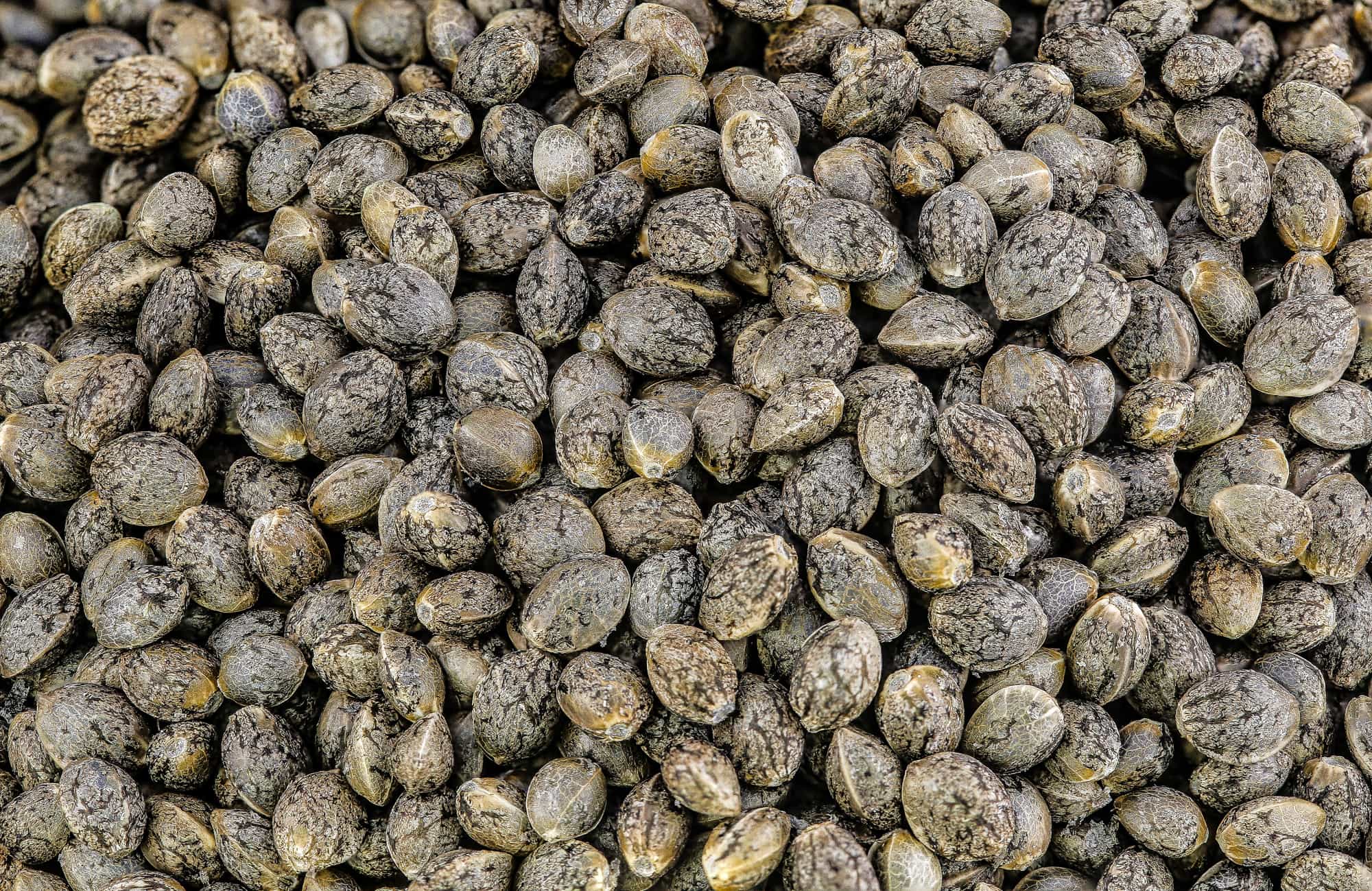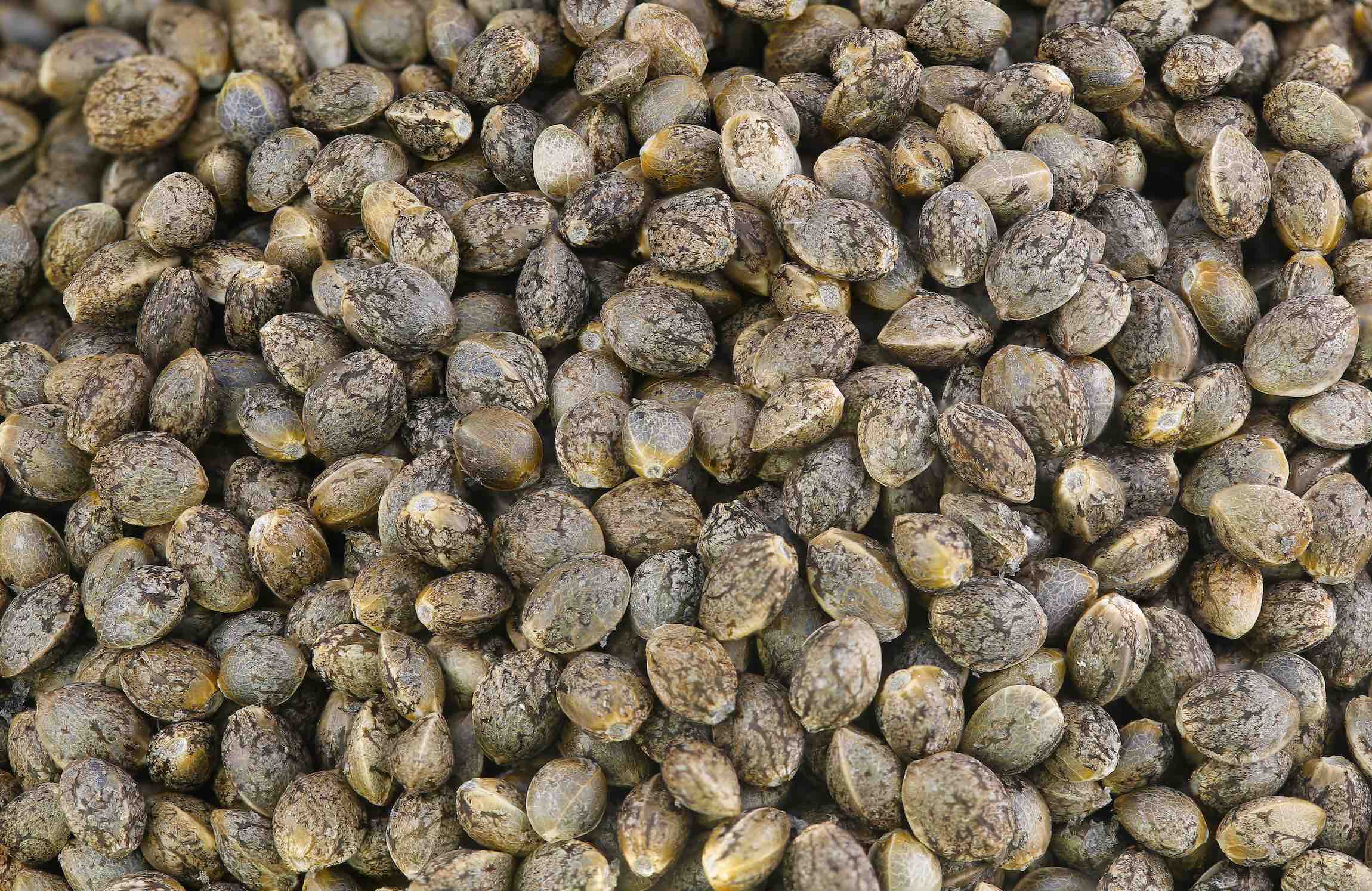
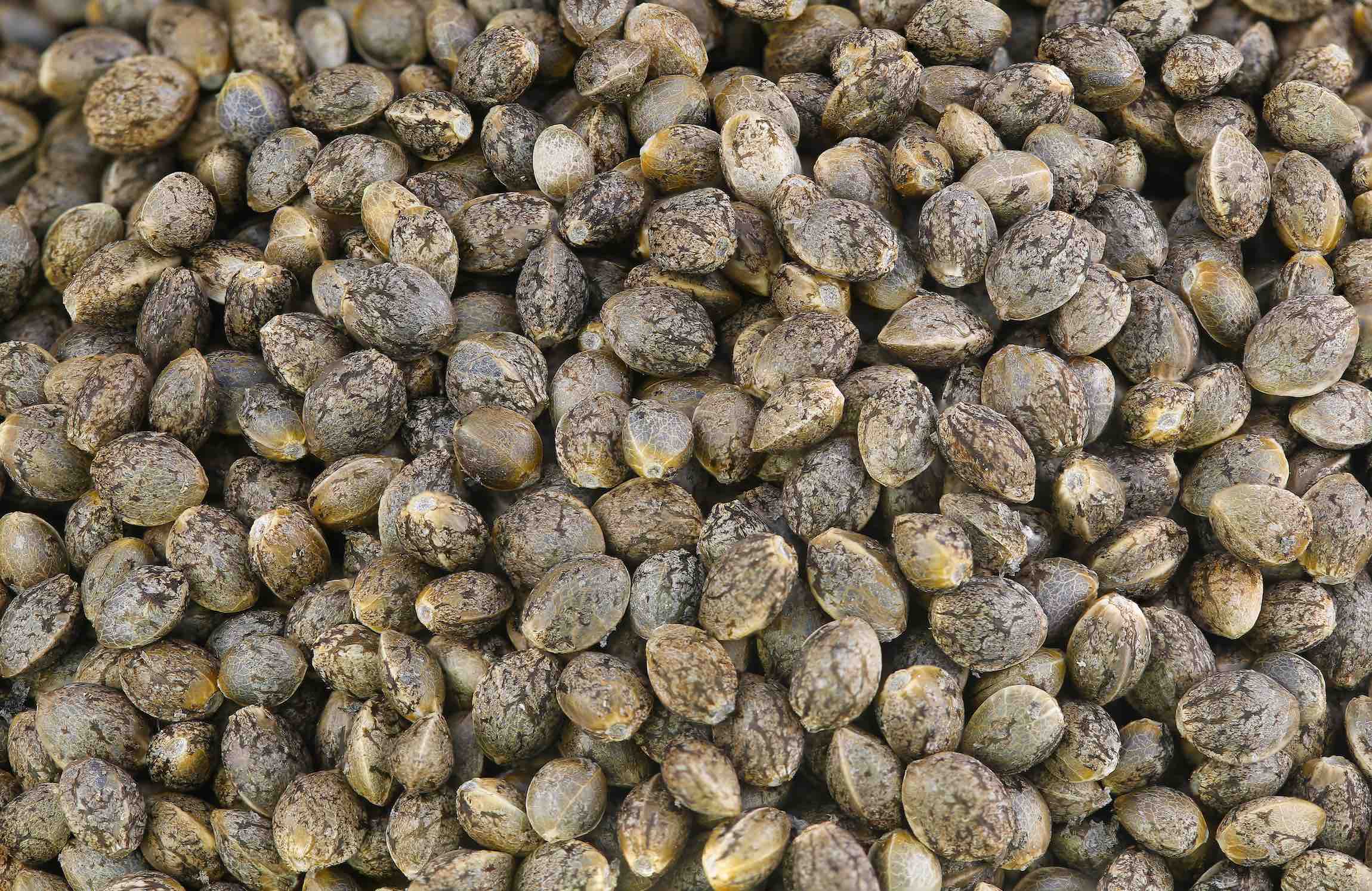
Comment choisir les meilleurs haricots
Choisir les graines de cannabis qui vous conviennent le mieux peut sembler compliqué avec l'inondation absolue de graines sur le marché. Nous avons nous-mêmes plus de 40 variétés différentes. Lisez la suite pour une analyse de base des graines de cannabis par rapport aux clones et à leurs différents types.
Graines ou Des clones ?
Les graines et les clones ont tous deux leurs avantages, mais une graine bien sélectionnée dépassera toujours même le plus sain des clones.
Cannabis à partir de graines
Les plants de cannabis cultivés à partir de graines ont un bon départ et ne transportent pas les parasites et les agents pathogènes des salles de culture précédentes. Les graines ont également une vigueur nettement supérieure à celle des clones, ce qui signifie qu'elles poussent plus vite. Une graine poussera à pas de géant plus vite qu'une bouture sans le temps d'arrêt après le clonage. Les graines ont également une racine pivotante, ce qui les aide à mieux résister aux conditions extérieures. Vous pouvez souvent voir des champs de plantes cultivées à partir de graines sans treillis, tandis que les clones ont toujours besoin de soutien. Pour les producteurs à grande échelle, les cultures cultivées à partir de graines sont beaucoup moins susceptibles d'être entièrement anéanties par un ravageur ou un agent pathogène, car de légères variabilités génétiques signifient que certains insectes aimeront certaines plantes plus que d'autres et ne sont pas toutes aimées de la même manière.
Cannabis à partir d'un clone
Les clones sont des boutures de plantes vivantes enracinées. Ils constituent un excellent moyen de préserver une génétique et d'avoir essentiellement une copie exacte d'une plante. Les clones sont la référence pour les cultivateurs commerciaux dans les États où le cannabis est légalisé, car les consommateurs sont devenus incroyablement exigeants. Chaque livre doit être identique et lorsqu'il s'agit de culture en intérieur, avoir toutes les plantes identiques est plus facile.
Cela dit, les clones viennent TOUJOURS avec des bagages. Maladie viroïde latente du houblon , acariens de la rousseur, tétranyques - il est presque impossible d'éradiquer complètement tous les parasites ou agents pathogènes. Dans des cas tels que le HPLVD, la charge virale augmente souvent au fur et à mesure que la plante est en vie et le clonage d'une plante malade entraînera des symptômes plus graves plus tard - même si vous ne pouvez pas dire qu'elle est malade. Et ne nous lancez pas sur les acariens de la rousseur.
Les clones n'ont pas non plus la vigueur d'une graine. Plus une plante est maintenue en vie longtemps, plus on constate généralement une diminution significative de sa vitesse de croissance.
Choisissez votre type
Bien que le THC soit la première chose à laquelle les gens pensent lorsqu’ils entendent le mot cannabis, Il couvre tout, de l'herbe sauvage des fossés aux variétés à forte teneur en THCV. Il s'agit de tout le cannabis, qu'il produise du CBD, du CBG, du CBDV, etc. De nombreux acteurs de l'industrie aiment décomposer les graines de cannabis par chémotype (le produit chimique dans lequel elles sont dominantes).
Type I Souches :
Variétés à dominante THC avec peu ou pas de cannabinoïdes présents, cela inclut également nos variétés THCV. Les plantes de type 1 produisent le « High » le plus fort et atteignent généralement entre 10 et 25 % de THCa. Une fois brûlé, le THCa se transforme en Delta 9 THC que tout le monde aime. Ne vous laissez pas tromper par les vendeurs de THCA, ils ne vendent que de l'herbe ordinaire. Toutes les variétés de THC sont des variétés de THCA. Vous pouvez retrouver notre sélection ici.
Type 2 Souches :
Plantes produisant des quantités similaires de THC et de CBD, également appelées 1:1. Les consommateurs qui sont submergés par le THC peuvent trouver exactement ce qu'ils recherchent avec les variétés 1:1, car le CBD a tendance à presque contrecarrer le THC. En général, les plantes produisent environ 5 à 10 % de THC et de CBD. Les plantes de type 2 sont également connues pour atteindre certains des taux totaux de cannabinoïdes les plus élevés de toutes les variétés. Nous sommes impatients de voir l'avenir des 1:1 ! Consultez notre gamme ici.
Type 3 Souches :
Dominante CBD les souches sont connues sous le nom de cannabis de type 3. Ces plantes produisent généralement environ 10 à 25 % de CBD et des quantités mineures d'autres cannabinoïdes.Le CBD est un cannabinoïde idéal pour ceux qui recherchent les bienfaits médicinaux des cannabinoïdes, sans le high intense. Les variétés de CBD sont également connues pour avoir le même arôme et les mêmes terpènes que les variétés traditionnelles de THC. Les graines à forte teneur en CBD produisent toujours une petite quantité de THC. Parcourez nos graines de CBD ici.
Type 4 Souches :
Riches en CBG rare, les plantes de type 4 sont parmi les plus récentes sur le marché. Ces plantes ont tendance à ne produire pratiquement pas de THC et de grandes quantités de CBG nouveau. Les bienfaits médicaux du CBG commencent tout juste à être étudiés, l'avenir est prometteur. Elles produisent souvent une sensation de lucidité et d'énergie avec une anxiété réduite chez les consommateurs. Achetez nos graines de CBG ici.
Souches de Varin :
Nouvelles et difficiles à reproduire, les souches Varin sont riches en THCV, CBDV et autres comme le CBGV. Ces variétés sont difficiles à trouver dans l'industrie et sont généralement présents dans environ 50 % du profil cannabinoïde. Par exemple, les variétés THCV contiennent généralement environ 50 % de THCV et environ 50 % de THC. Les variétés CBDV sont les mêmes - environ 50/50 CBDV/CBD. Ces variétés produisent des effets uniques et stimulants, mais sont généralement des variétés à floraison plus longue. Vous pouvez consulter notre programmation ici.
Graines de type 5 : Ces variétés ne produisent aucun cannabinoïde.
Graines de cannabis féminisées vs régulières
Nous avons choisi de sélectionner exclusivement des graines féminisées dans notre programme de sélection. Cette démarche a été lancée dans le seul but de faciliter la vie des agriculteurs à grande échelle, mais dans l'ensemble, elle facilite la vie de tout le monde.
Graines de cannabis féminisées
Si elles sont bien produites, les graines féminisées produisent des plantes 100 % femelles. Cela signifie qu'elles sont toutes vouées à produire des fleurs et non du pollen, car les plantes mâles ne produisent pas les fleurs que l'on souhaite.
Au début de la production de graines féminisées, les sélectionneurs prenaient une femelle avec une fleur hermaphrodite et l'utilisaient pour polliniser une autre plante femelle. Bien que cela produise des graines souvent féminisées, la future progéniture est souvent instable et très susceptible de devenir hermaphrodite à nouveau - ce qui est un cauchemar.
Nous utilisons un procédé qui consiste à pulvériser du thiosulfate d'argent sur les plantes femelles, ce qui les force à produire des fleurs mâles. Génétiquement parlant, chaque plante est une femelle, mais nous voyons généralement environ 1/4000 plantes comme étant phénotypiquement mâles, malgré la présence de chromosomes X et Y femelles. Ces plantes doivent néanmoins être éliminées.
Graines de cannabis régulières
Les graines produisent des plantes mâles et femelles et nécessitent un « sexage » pour vous assurer que vous cultivez ce que vous pensez être. La plupart du temps, les graines produisent environ 50 % de femelles et 50 % de mâles. En général, les plantes dévoilent leur sexe environ 5 à 6 semaines après le début de leur vie. Les plantes mâles produisent un ensemble de « boules » à environ 1/4 de la hauteur d'une plante et les plantes femelles produisent deux stigmates étroits. L'un des principaux inconvénients est que les plantes ne rendent pas toujours leur sexe évident et les producteurs de graines réguliers trouvent toujours qu'un morceau des plantes qu'ils pensaient être des femelles sont des mâles. Non seulement les graines régulières signifient que vous devez prendre soin du double de la quantité de plantes pour la moitié du nombre de plantes à conserver, mais cela peut également signifier des découvertes de mâles en fin de saison. C'est généralement aussi la plus grosse plante.
Les graines régulières sont une bonne option si vous cherchez à les cultiver vous-même.
Graines à autofloraison vs graines à photopériode
La plupart des variétés de cannabis sont sensibles à la photopériode, ce qui signifie qu'elles poussent jusqu'à ce que la durée de la journée soit suffisamment courte pour que la plante pense que l'été touche à sa fin et qu'il est temps de produire des fleurs pour se reproduire. Cela se produit généralement vers le début du mois d'août, lorsque la durée du jour est tombée à 12 heures de lumière et 12 heures d'obscurité.Les variétés de cannabis à autofloraison passeront en floraison - généralement environ 4 à 5 semaines après la germination de la plante - quel que soit le nombre d'heures de lumière du jour qu'elle reçoit.
Graines de cannabis à autofloraison
Les graines à autofloraison ont récemment suscité beaucoup d'intérêt, en particulier auprès des cultivateurs amateurs. Ces nouvelles plantes Les graines à autofloraison peuvent être plantées en terre en mai dans l'hémisphère nord pour une récolte mûre en juillet. Elles constituent également une option amusante pour les personnes qui cherchent à cultiver des plantes plus petites qui n'occupent pas l'espace d'une plante de pleine saison. Les graines à autofloraison sont également une excellente option pour les personnes qui cultivent dans les hémisphères nord ou sud où les heures de clarté sont très longues en été, mais où le temps d'automne arrive avant que les variétés traditionnelles ne mûrissent. Les graines à autofloraison atteignent généralement leur maturité environ 65 à 90 jours après la germination de la graine.
Cela dit, les variétés de cannabis à autofloraison sont difficiles à cultiver. Elles sont programmées pour fleurir dès les premiers signes de stress et nécessitent beaucoup de soins et d'attention dans leurs premiers jours. Laisser les plantes devenir racinaires alors qu'elles sont très jeunes est l'un des problèmes les plus courants, et conduit généralement les cultivateurs à avoir une plante de 6 pouces de haut sur un bâton. Soit il faut planter les graines directement dans leur lieu d'origine, soit il faut faire très attention pour éviter les pertes de rendement. Les autofloraisons ont également tendance à produire des quantités plus faibles de cannabinoïdes et sont des plantes moins constantes que les plantes de pleine saison car elles sont toujours produites à partir de deux plantes à partir de graines. Les autofloraisons ne peuvent pas être clonées - les clones mourront toujours. Nous proposons ici quelques variétés.
Graines de cannabis photopériodiques
Les variétés de cannabis à pleine saison ou sensibles à la photopériode sont idéalement plantées à l'extérieur à la fin du printemps, poussent de manière végétative pendant plusieurs mois et fleurissent lorsque la durée du jour raccourcit à la fin de l'été. Ces plantes produisent les plus gros rendements et sont plus constantes que les autofloraisons. Les plantes photopériodiques cultivées à partir de graines doivent encore atteindre la maturité sexuelle avant de pouvoir fleurir - ce qui se produit généralement lorsque les plantes ont environ 5 à 6 semaines ou mesurent environ 30 à 45 cm de haut. Nous recommandons souvent des plantes à pleine saison aux agriculteurs qui cultivent à la fin de l'été ou dans des zones qui ne reçoivent jamais plus de 14 heures de lumière du jour. Les plantes se comporteront essentiellement comme une autofloraison en poussant de manière végétative pendant 5 semaines et en fleurissant pendant 8 - avec une croissance et une production nettement plus constantes.
F1 contre F2 contre Polyhybride contre les graines S1
Graines hybrides F1
Les F1 sont produites lorsque deux lignées très différentes génétiquement, mais consanguines, sont croisées. Pour produire des graines F1, un sélectionneur doit croiser un parent sur plusieurs générations afin de réduire le plus possible le pool génétique. Cela lui permet également de sélectionner les plantes présentant les caractéristiques les plus souhaitables pour les reproduire plus tard dans la lignée. Avec le cannabis, les sélectionneurs peuvent généralement passer par 4 générations de consanguinité (autofécondation). Une fois qu'un parent est sélectionné, le même processus est effectué avec un autre parent. Une fois les deux lignées consanguines sélectionnées, les deux plantes sont croisées pour produire une F1. Ce sont les graines les plus constantes et les plus vigoureuses de toutes. Il n'y a essentiellement qu'un seul phénotype et pratiquement chaque graine est à conserver.
F2 Graines
Les F2 sont quand une croix est faite avec un F1. La génétique sera un mélange hétéroclite des deux parents avec très peu de cohérence - et de nombreuses expressions génétiques différentes des deux parents. Les F2 sont amusantes pour ceux qui recherchent quelque chose d'unique, mais certainement pas cohérent. Attendez-vous à de grandes variations entre les plantes.
Graines S1
Les S1 se produisent lorsqu'un obtenteur « auto-pollinise » une plante, ou l'auto-pollinise. Cela peut être fait en utilisant des pulvérisations qui induisent des fleurs mâles sur une plante femelle - ce qui permet à une plante de s'auto-polliniser.En fonction du degré de consanguinité de la lignée, il existe toujours une certaine variation dans la descendance, mais c'est une excellente option pour la sélection des semences. C'est une façon amusante de préserver les souches issues uniquement de clones.
Graines polyhybrides
Les polyhybrides sont la majorité des graines actuellement sur le marché du cannabis. Un éleveur prend simplement deux plantes qu'il aime, sans connaître leur lignée ou leur constitution génétique, et réalise un croisement. Cela crée une fois de plus un large éventail d'expressions génétiques dans la progéniture et pratiquement aucune cohérence. Vous pouvez trouver une plante à garder dans chaque paquet, mais vous pouvez aussi ne pas en trouver aucune.
Temps de floraison
La période de floraison fait référence à la durée pendant laquelle une plante fleurit après avoir été induite et constitue un facteur très important à prendre en compte. La plupart des variétés varient entre 7 et 12 semaines de floraison, soit environ 50 à 100 jours. Il s'agit d'une énorme variation - et en général, les plantes à floraison plus courte sont beaucoup plus faciles à gérer.
Si vous habitez dans une région où il y a de fortes gelées ou de fortes pluies au début de l'automne, vous voudrez certainement opter pour des variétés à floraison plus courte. Le mauvais temps lorsque les plantes sont à maturité maximale peut ruiner une récolte très rapidement. L'une des caractéristiques de notre programme de sélection est la maturation précoce en extérieur. Nos variétés ont tendance à fleurir à la mi-juillet, ce qui leur permet de mûrir à la mi-septembre. Elles passent toujours entre 7 et 9 semaines à fleurir, mais elles démarrent plus tôt que les variétés traditionnelles qui fleurissent souvent début août.
Les variétés qui mûrissent en 10 à 12 semaines de floraison peuvent être parmi les plus intéressantes du marché, mais elles présentent des difficultés majeures. Non seulement à cause du temps automnal, mais aussi de la diminution du soleil et des températures. À moins que vous ne soyez dans un endroit très chaud et sec où il ne gèle pas souvent, maintenez la température en dessous de 10 °C. De plus, les plantes à longue floraison coûtent beaucoup plus cher en intérieur pour atteindre une maturité optimale.
Graines de cannabis diploïdes et triploïdes
Graines diploïdes
Les plantes de cannabis sauvages sont presque entièrement diploïdes. Cela signifie qu'elles possèdent deux jeux de chromosomes de chaque parent. C'est ce que tout le monde a l'habitude de cultiver.
Graines triploïdes
En 2020, nous avons été les pionniers des premières graines de cannabis triploïdes commerciales. Ces variétés possèdent 3 jeux de chromosomes d'un parent et 2 d'un autre. Elles suivent les étapes alimentaires de nombreuses cultures agricoles et constituent une technologie vraiment utile.
Nous constatons une production plus importante, une meilleure teneur en résine et des plantes qui n'aiment pas faire de graines. Ces variétés sont une excellente option pour ceux qui cherchent à cultiver les plus grosses plantes, les fleurs les plus voyantes ou qui doivent pousser dans des zones où le pollen de cannabis est présent. c'est-à-dire des populations mâles à proximité. Bien qu'elles produisent très peu de graines, elles peuvent quand même en produire. Ce sont nos variétés choisies pour la production de fleurs fumables CBD, CBG, CBDV, THC et THCV.
Nous sommes ravis d'être la première entreprise à commercialiser du cannabis triploïde Les graines et même si nous les aimons, elles ne sont pas nécessaires pour tout le monde. Si vous cultivez uniquement à des fins d'extraction, les graines triploïdes ne sont pas nécessaires. Les graines nous coûtent une tonne d'argent et ne sont pas aussi rentables que les diploïdes traditionnels. Elles ne produisent pas non plus nécessairement des quantités plus élevées de cannabinoïdes. Si vous voulez juste quelques plantes dans votre jardin pour des baumes, des baumes, etc. - ou si vous êtes un agriculteur qui en cultive des millions - elles ne sont tout simplement pas nécessaires.
Arôme alias « Terpènes »
Les terpènes sont devenus un mot à la mode dans le cannabis, mais en fin de compte, ils ne sont responsables que d'environ la moitié des arômes du cannabis. Les plantes de cannabis produisent une grande variété de composés volatils, allant des alcools et des esters aux adélhydes et aux cétones, qui influencent tous les arômes.Il peut être facile de regarder une analyse de terpènes et de s'attendre à savoir à quoi ressemble une fleur, mais ce n'est pas le cas. Par exemple, aucun terpène ne produit l'arôme de mouffette ou l'arôme de carburant. Ceux-ci sont produits par d'autres composés. Vous pouvez trouver 2 fleurs avec pratiquement les mêmes résultats de terpènes exacts qui ont des odeurs totalement différentes. Utilisez ce qu'un sélectionneur décrit pour choisir vos saveurs et non les terpènes dominants présents. Beaucoup plus d'informations à ce sujet ici -->
Indica vs. Sativa vs. Hybrid
On pensait autrefois que les plantes de cannabis avaient plusieurs espèces en fonction de l'endroit où elles poussaient. « Indica » se référant à graisse des plantes à feuilles courtes et trapues, à grandes fleurs poussant dans les montagnes arides de l'Hindu Kush - et des Sativa qui poussaient dans les basses terres et avaient des feuilles plus longues et plus fines, des fleurs plus petites et des périodes de floraison plus longues.
Des centaines d’années plus tard, la théorie a été brisée. La science a révélé qu'il s'agissait de la même espèce, Cannabis Sativa L. Malheureusement, la classification basée sur la géographie n'a pas été brisée et est encore fréquemment utilisée aujourd'hui. De plus, comme chaque variété de cannabis sur le marché est un mélange de plusieurs variétés différentes, il n'existe absolument pas de pure « Indica » ou de pure « Sativa ». Même dans les terres où le cannabis pousse à l'état sauvage, des variétés ont été introduites du monde entier, modifiant l'ensemble du patrimoine génétique. Notre cofondateur Seth Crawford vient de contribuer à la rédaction d'un article très intéressant sur le pangénome du cannabis, qui approfondit beaucoup plus la géographie. Cela vaut vraiment la peine d'y jeter un œil.
En ce qui concerne l’utilisation de ces classifications pour décrire les effets, il s’agit d’une autre zone grise. Le terme indica désigne les fleurs qui procurent aux consommateurs une sensation de sédation et de relaxation. Le terme sativa désigne celles qui procurent aux consommateurs des effets stimulants et énergisants. Le terme hybride désigne les fleurs qui procurent aux consommateurs des effets stimulants et sédatifs.
Bien que cela semble simple et direct, ces classifications ne sont qu'un stratagème marketing. Le cannabis est subjectif et chaque consommateur ressent chaque fleur de cannabis différemment. Les effets eux-mêmes sont déterminés par les composés aromatiques et n'ont absolument rien à voir avec le fait que la plante ait de grandes feuilles grasses ou de longues feuilles maigres.
En général, nous essayons d'éviter complètement d'utiliser ces classifications et pensons que le nez de l'utilisateur le sait. Si vous aimez l'odeur, il s'agit probablement d'une variété que vous apprécierez. Trouvez-en une qui vous aide à vous détendre et tenez-vous-en à d'autres ayant des caractéristiques similaires.


